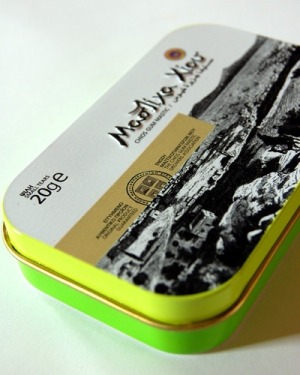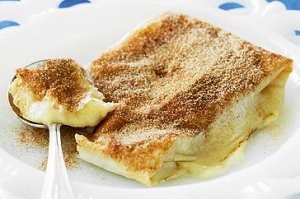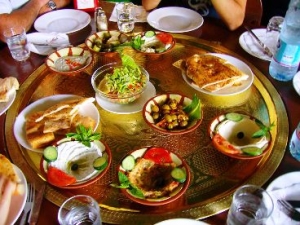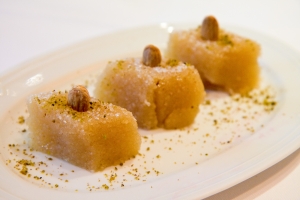LIFE & CULTURE
XpatAthens
Shrimp Linguine In A Tomato And Feta Sauce
This shrimp linguine is inspired by one of my favourite Greek dishes, shrimp saganaki, where shrimp is cooked in tasty tomato and feta sauce and it works really well as a pasta dish! If you are looking for a quick and easy weeknight meal this recipe fits the bill literally only taking as long to make as it takes to boil the water and to cook the pasta.
When in season, fresh tomatoes, dill and parsley really make this dish sing but otherwise pantry staples, canned diced tomatoes and dried herbs, also work well so you can enjoy this tasty pasta all year round.
Ingredients
240 grams linguine
1 tablespoon olive oil
1 onion, diced
3 cloves garlic, chopped
red chili pepper flakes to taste
1/4 cup white wine or chicken broth
4 cups diced fresh tomatoes or 1 can diced tomatoes
1 teaspoon oregano
1/2 kilo shrimp, peeled and deviened
1/2 cup feta, crumbled
1 tablespoon dill, chopped
1/4 cup parsley, chopped
salt and pepper to taste
Directions
Bring water to a boil in a large pot and cook the pasta as directed on package.
Meanwhile, heat the oil in a pan over medium heat, add the onion and cook until tender, about 5-7 minutes.
Add the garlic and chili pepper flakes and cook until fragrant, about 1 minute.
Add the wine and simmer for a few minutes.
Add the tomatoes and oregano and simmer until the sauce thickens, about 10 minutes
Add the shrimp and and simmer until cooked, about 2-4 minutes.
Mix in the feta, dill and parsley, season with salt and pepper and serve over the linguine.
Option: Add a splash of ouzo or other anise liqueur along with the tomatoes or 1/2 teaspoon ground fennel seeds with the garlic and chili pepper flakes for a hint of the exotic.
Option: Use 1 teaspoon dried dill instead of fresh and add to the sauce along with the oregano.
Tip: Serve with crusty bread to sop up any and all leftover sauce.
Nutrition Facts: Calories 422, Fat 9g (Saturated 3g, Trans 0), Cholesterol 159mg, Sodium 880mg, Carbs 56g (Fiber 4g, Sugars 8g), Protein 27g
By Kevin Lynch
Mastic - Aromatic Gum Drops From Chios
 Mastic cultivation, along with its gathering and processing, takes place in all four seasons of the year and is similar to other traditional cultivations, such as the olive. And it has always been a family affair.
Mastic cultivation, along with its gathering and processing, takes place in all four seasons of the year and is similar to other traditional cultivations, such as the olive. And it has always been a family affair.
Mastic is the natural resin excreted from the trunk and branches of the schinos, the local Greek name for the mastic tree (Pistacia Lentiscus var. Chia). It is an evergreen shrub that takes 40-50 years to reach its full height of 2-3 meters. It has the potential to produce mastic five years after being planted. The tree is a resilient plant, vulnerable only to extreme cold.
 The preparation for the cultivation of mastic begins in February of each year. First, the lower braches of the tree are pruned and then they are trimmed into a specific shape, in order to enable light to reach all of the branches and to make way for harvesting.
The preparation for the cultivation of mastic begins in February of each year. First, the lower braches of the tree are pruned and then they are trimmed into a specific shape, in order to enable light to reach all of the branches and to make way for harvesting.
Summer is the season of mastic production and collection and depending on weather conditions, the season can last up to 75 days.
Villagers from the mastic towns flock to the fields to incise the tree trunks carefully with a sharp pointed tool so as not to damage the tree. "It requires respect" as mastic cultivators say, and so they do not entrust this task to casual laborers.
Immediately after the incisions are made, sap begins to ooze out and drip onto the soil beneath which has been prepared beforehand by the cultivators. The ground under each tree is cleaned of pebbles and dead leaves and is then covered with a white chalky powdered stone which helps harden the sap upon contact and makes it easy to collect the falling mastic drops. It takes 15-20 days for the drops to harden into crystalline granules ready for collection. The taste is initially somewhat bitter; however the bitterness soon gives way to a unique flavor that is much prized. The hardness of the mastic depends on the climate and atmospheric temperature, the duration of the resin's exposure on the tree outdoors as well as the size of the droplet. When a tree's flow is constant, the drop is big and rather soft while a non-constant flow gives a small but harder drop.
Collection is completed by September in the early morning hours. The workers first collect the big pieces that have formed from the drippings called pita (pie). Then they collect fat droplets and sweep the rest into sacks; finally, they collect the droplets that have remained on the branches and trunk of the tree. The harvest is stored in cool storerooms.
Later, the process of cleaning the mastic starts. This process takes months, starting at the producer's house and ending at the facilities of the Chios mastiha growers association. The cleaning of the mastic is traditionally a woman's job, particularly older women. First they sift it to get rid of any twigs, leaves and soil. Then they wash it and spread it out inside their homes to dry. Next, using a pointed knife they clean it granule by granule of any foreign matter that has stuck to it. This procedure begins in the fall and lasts until spring. Since it is a tiring and tedious job, it is performed as a group project. Each woman asks her friends to help her and they usually work for three or four hours at a time. This collaborative spirit is a custom that has long existed among the inhabitants of the villages.
Today there are two categories of mastic producers: Professional farmers who make up approximately 20 percent and those who practice another trade and produce mastic as a part-time job. The permanent residents of Mastihohoria are for the most part farmers. Mastic production slowed down between 1970 and the early 1990s but in recent years, the rise in price of mastic has reignited interest in the cultivation of the gum.
By Sarah Shaban, Arab News
Greek Study Shows Benefits Of A Mediterranean Diet
The benefits of Mediterranean food went beyond merely keeping people's weight down. In fact the study's authors said that adherence to the diet did not tend to affect whether someone was overweight - which would predispose them to type 2 diabetes.
"This suggests that the protection of the Mediterranean diet against diabetes is not through weight control, but through several dietary characteristics of the Mediterranean diet," the study's authors said.
The use of extra virgin olive oil, which led to a high ratio of mono-unsaturated fats to saturated fatty acids, may be the cause they said, but added that information on this was still conflicting.
By Charlie Cooper
www.noosanews.com.au
Mmmmm….. Bougatsa
Here is the recipe for you to try.
• Serves: 10 slices
• Prep Time: 15 minutes
• Total Time: 50 minutes
Ingredients
• 6 cups milk
• grated rind of 1 lemon (optional)
• 1 1/2 cups sugar
• 1/2 cup melted butter
• 3/4 cups fine semolina
• Confectioner’s sugar
• 3 eggs
• cinnamon
• 1 tsp vanilla
• pastry sheets
Instructions
Beat the eggs in a bowl with the sugar until creamy. Mix in the semolina. Slowly add the milk while beating continuously. Pour the mixture into a medium sized pot and add the lemon rind (if you are using it) and the vanilla. Over medium heat, bring the mixture to a boil, stirring constantly with a wooden spoon. Be careful that the mixture doesn't stick to the bottom of the pot and burn. When it has thickened, remove the pot from the heat, set aside and cover with a lid so 'skin' doesn't form over it.
Take 4 pastry sheets and lay them out on a counter on top of each other. Cut the pastry into 4 quarters - cross wise so you have 16 equal rectangles (1). Brush each fillo rectangle with butter and put to one side.
Take one whole pastry sheet and lay it out. Brush it over with butter. Place 2 of the cut rectangles in the center of the bottom half of the sheet to form a base.(2) Spoon 2 or 3 tablespoons of the cream filling into the center of the base. Fold the pastry on the long sides of the base and the shorter end into the center, enclosing the cream filling, then carefully fold the rest of the pastry over and over into a neat package shape.(3, 4 & 5) Use butter, brushed on the pastry sides and ends as a' glue' to hold the fillo down. You can fold them as small or large as you like. Repeat this procedure to make more Bougatses until the cream and fillo are used up.
Arrange the finished Bougatses on a buttered cookie sheet, and brush them with more butter. Bake at 350°F for about 35 minutes or until the pastry is flaky and golden. When done, remove them from the oven and sprinkle them with powdered sugar and cinnamon.
Appetizing Mezedes
Here are a few to try:
- Tzatziki: Greek yogurt with finely chopped cucumber, garlic and olive oil. Ideal to eat with fresh Greek bread, fried potatoes or fried meatballs.
- Saganaki: Fried cheese. Different sorts of cheese can be found in saganaki. Excellent with a zest of lemon.
- Keftedakia: Fried meatballs of beef, garlic and bread. Excellent dish.
- Spanakopitakia: Small spinach pies with crushed feta cheese.
- Tiropitakia: Small cheese pies, usually made of feta or kasseri cheese.
- Horta: Boiled wild greens with olive oil, salt and lemon.
- Briam: Mix of roast potatoes, eggplants, onions, garlic, tomato sauce and olive oil.
- Dolmadakia: Grape leaves filled with rice and onions and sometimes minced beef.
- Kalamarakia: Small pieces of fried squid with lemon juice.
- Htapodi: Small pieces of octopus served either fried with lemon juice or boiled, with olive oil, vinegar and oregano.
- Feta cheese: The famous Greek cheese can also be eaten alone, as a meze, with olive oil and oregano.
Kali Oreksi!
greeka.com
GB Corner Store - Now Open
Have you heard? Athens' landmark hotel recently re-opened its GB Corner as a warm and welcoming shop of amazing trendy and traditional products ~ right at street level!
The most renowned 'corner of Athens' opens its doors and welcomes you to a magic world filled with unique shopping and gift ideas. Explore the authentic selection of GB Products as well as an exclusive variety of indigenous delicacies and Pernigotti or Valrhona chocolates. The shop is open Monday - Saturday 11:00 - 21:00.
receive 10% off purchases made online at the GB Store.
Offer is valid until Friday January 16th.
Prawns (Garides) Saganaki
Ingredients:
800g prawns
100g grated onion
300g chopped fresh tomatoes
200g feta cheese
100g chopped green pepper
1 hot green chilli pepper chopped
100 ml olive oil
2 cloves grated garlic
1 teaspoon chopped parsley
50 ml ouzo
Salt and pepper
Preparation:
Remove the shell and the intestine from the prawns, leaving the head and tail, and cut in two.
Heat the olive oil in a frying pan and when it is hot, add the onion, garlic, green pepper and chilli pepper.
Fry for 2 minutes and then add the prawns and stir well.
Add the ouzo and continue cooking for another 2 minutes.
Add the tomatoes, parsley, salt and pepper and simmer for another 5 minutes.
Distribute the mixture evenly into 4 ceramic bowls.
Cut the feta cheese into small cubes and place on top of each bowl.
Place the bowls under the grill long enough for the feta to melt and colour slightly.
Serve the 4 individual portions hot, adding some chopped fresh parsley on top if you wish.
Eat and Enjoy!
Real Greek Recipes Blogspot
TV Chef Vefa Alexiadou Reveals Cooking Secrets
You are a well-known, immensely popular, leading culinary authority in Greece. You were born in Volos, a coastal port city in Thessaly, and it is obvious that you have an intense passion for cooking. Where do you think this enthusiasm came from? Did you learn how to cook at a young age?
My passion for cooking began in childhood because of my mother, who was born in Constantinople. She conveyed the beauty of her own homeland in the unforgettable tastes and aromas of food that tantalized everyone’s tastebuds. She had an inexhaustible source of recipes, which she taught me to cook in her own inimitable way, and emphasized the need for each dish to look as attractive as it tasted. I believe she succeeded in passing on her love and flair for cooking to me.
At that time, it was impossible to think how much cooking would influence me in later life. That it would be my main occupation, which even today, after so many years, fills me with joy and satisfaction.
You must have tested thousands of varying recipes over the years. How do you manage to keep coming up with new ideas?
Well, there’s such a variety of products produced by the earth and the ocean, that there are many ways in which we can process and combine them in order to create new recipes. I have already stored about 100,000 selected recipes in my computer. What do I mean by “selected?” Well, dishes which I have thoroughly tested with proven ingredients and in balanced proportions, that have had an accurate result.
There are so many major cultural differences in the approach people around the world take to cooking and eating food. What can you tell me about Greek cuisine in general and how healthy it is?
The Greek culinary tradition, inextricably tied to Greek civilization, is ancient, with roots going back many centuries.
The unique geographical position of Greece, the mild climate, the diversity of its soil, with large mountainous areas, plains and surrounding ocean, created ideal conditions for producing outstanding products from the land and sea. Thus, Greece is well-known for its highly refined and healthy cuisine.
The colonial expansion of the Greek element in the rest of the Mediterranean, as well as contact with other cultures of the East, were equally important factors for the development of Greek cuisine. The final configuration in classical times influenced the cuisines of the cultures that followed, such as the Greco-Roman and later, through the long path of the Byzantine, the cuisines of the middle Ages and modern Europe.
Vefa, you became an even bigger household name when you started appearing on TV, passing on cooking tips and bringing mouth-watering recipes into the homes of thousands. What was that like, cooking on air in front of the bright lights and cameras?
In a few words, it was a wonderful adventure. I remember my first years on television. The main difficulty I encountered at first, was how to get used to looking into the lens. However, there were numerous other difficulties. For starters, there was no kitchen. I presented dishes on a table and had to show them being prepared in all their stages. This was hard because the food was pre-cooked, ready for final presentation, while I prepared all the ingredients before the TV audience. This meant double trouble and double costs. I had to bring the tools and utensils I needed from home and return with them every day. However, I enjoyed my cooking, and drew strength and courage to overcome those first difficulties. I loved my public appearances and the admiration of my fans.
From cooking delicious Greek dishes, writing innovative cookery books, producing culinary videos, opening the increasingly popular “Vefa House” stores and appearing on TV and in countless magazines: which one of these were the most challenging and the most enjoyable?
In 1980, at a time when, in Greece, there were no serious attempts at writing a cookbook, I decided that having the know-how and the real taste of cooking, I would create my own first cookbook. Its enormous success inspired me to write another three cookbooks, completing a series of books which were titled “Invitations to Dinner, to Cocktails, to Tea and to a Children’s Party”. These books immediately became popular with the Greek public. My career as a writer/ publisher continued with the book “Greek Cuisine” followed by “Greek Pastries and Desserts”. The success of these two books was and remains constant in Greece and abroad. They were translated into English and are especially popular in the US, Australia and Canada. “Greek Cuisine” was also translated into German and is still selling well in German-speaking countries. My next book was “Festive Cuisine”, which has also been translated into English and after that, along with my daughter Alexia, we published the first volume of vegetarian and seafood books, which received an award as the Best Mediterranean Cookbook in Greek from the Salon International Livre Gourmand of Perigueux, France. Since then, we have completed a second volume.
To read more, please visit greekreporter.com
By Lorraine Eyre
Ekmek (Byzantine Dessert With Fresh Cream)
This dessert consists of three layers. The first layer is a spongy cake with a sweet syrup, the second layer is a custard pastry cream that has been lightened with whipped cream and finished with a generous layer of whipped cream that has been whipped and flavored with vanilla. Finally topped with toasted slivered almonds.
SPONGE CAKE
4 eggs
1 cup sugar
1 cup flour
Pinch of salt
4 tbs melted butter
CUSTARD CREAM
2 cups whole milk
½ cup sugar
¼ cup flour
2 eggs
3 Tbs butter
½ tsp vanilla
1 cup fresh whipping cream
FRESH WHIPPED CREAM
2 cups fresh whipping cream
½ tsp vanilla
½ cup slivered and toasted almonds
In a mixer whisk on the highest speed four eggs with one cup of sugar until frothy and pale in color. Remove from mixer and fold in the flour with a shifter. Take turns in mixing melted butter and sifts of flour so that you uniformly combine the ingredients. Do not over mix. You need all the air and bubbles.
Put in a rectangular cookie sheet on top greased baking paper. Bake in a 350 preheated oven for 20 minutes. Remove and allow to cool. When cooled down, wet with a light simple syrup.
To make the syrup put in a sauce pan 1 cup of sugar with ½ cup water. Allow to simmer for 4-5 minutes.
Now proceed with making the pastry cream.
In a large mixing bowl we whisk the eggs with sugar and flour. In a sauce pan we heat the milk slightly and pour the above paste (eggs, sugar, flour) into the sauce pan with the milk. We return the cream to the heat and whisking constantly on medium heat the cream will thicken. Then we add the butter and vanilla. We mix to incorporate and remove from the heat. Set aside and allow to cool down.
In the mean time whip all three cups of the cream with 1 TBS sugar and vanilla until stiff. Take one cup of the cream and slowly with careful motions incorporate into the pastry cream. Cover and put in the fridge for ½ hour.
Now you are ready to assemble the dessert. It sounds like a lot of work but after you make it once and you know the steps it is really easy.
Choose a nice large platter with agreeable shape of your sponge cake. Place the sponge cake in the dish. Spread the cooled-down pastry cream. Finish with the whipped cream on top and toasted almonds. Place the dessert in the fridge and allow to cool down for a couple of hours before serving.
By Eleni Melirrytou
Gluten-Free Greek Halva Recipe
INGREDIENTS
½ cup (1 stick) unsalted butter
1 ½ cups Cream of Rice
3 heaping tablespoons Spanish pine nuts or blanched and shredded almonds (optional)
1 ½ cups sugar
2 teaspoons ground cinnamon plus ½ teaspoon, for garnish
¼ teaspoon cloves, ground
¼ teaspoon salt (none if using salted butter)
2 cups boiling water
½ cup chopped pistachios, for garnish
DIRECTIONS
In a large heavy saucepan, heat the butter until melted over low heat. Add the Cream of Rice, stirring continuously. When the mixture begins to turn golden, add in the pine nuts/almonds and stir until the mixture is golden brown. Stir in sugar, cinnamon, cloves, and salt. Add in the boiling water with caution, stir until blended and cook for 2-3 minutes until the syrup is absorbed. Remove from heat and cover for about 15 minutes.
Turn into an 8-by-8 inch dish, press down firmly and even out with a spatula. While it is still hot, garnish by sprinkling on a light dusting of cinnamon and the chopped pistachios. Gently, but firmly press with hands. Allow to cool slightly, and then cut into 16 pieces. Serve. Any leftovers can be stored in refrigerator, covered.
Recipe Details
Makes 16 servings
Time: 30 minutes
By Erin Swing











